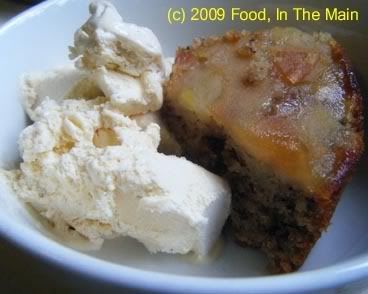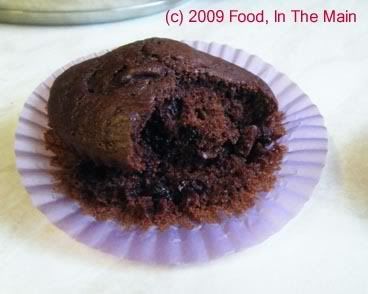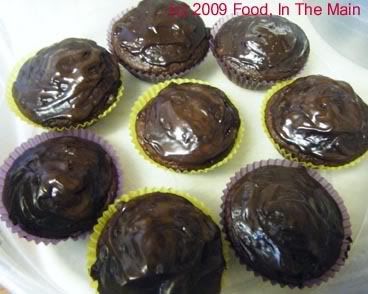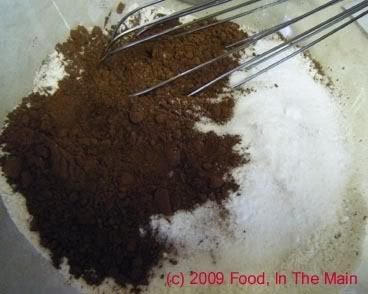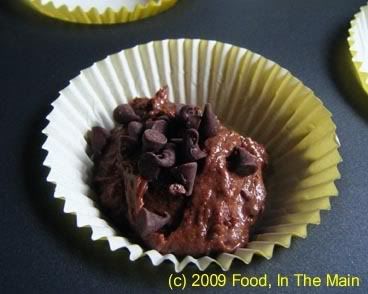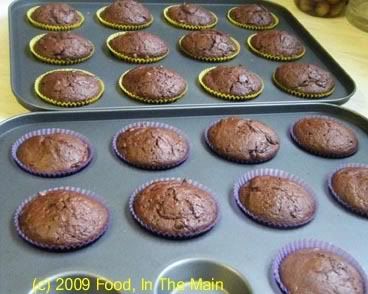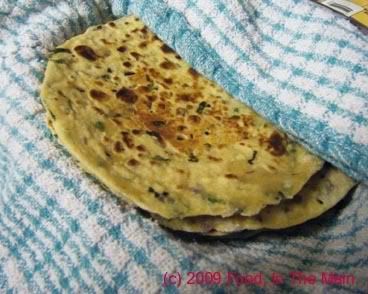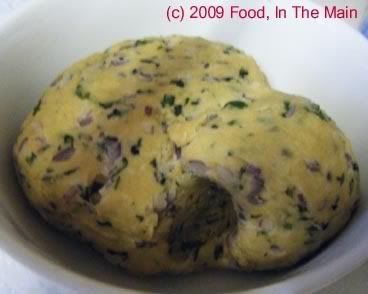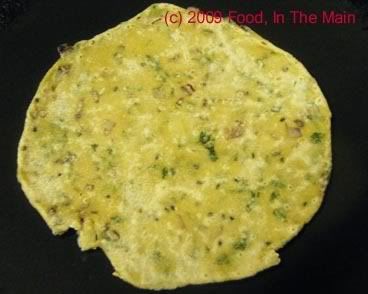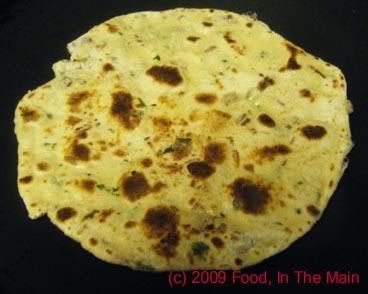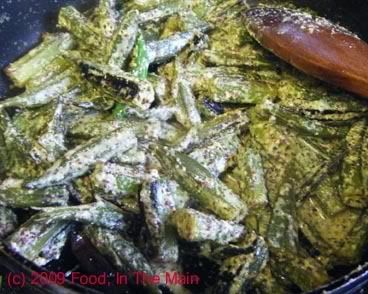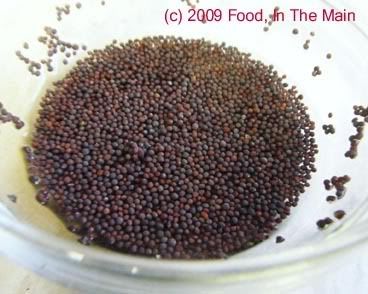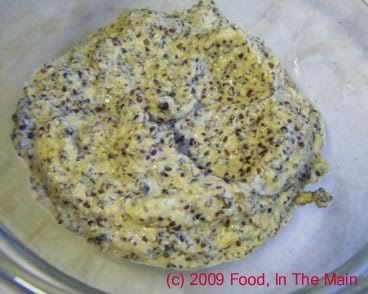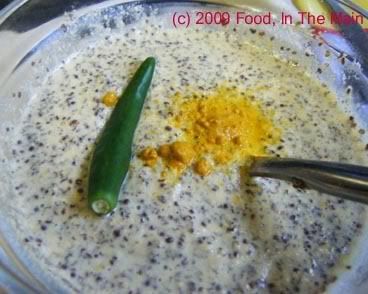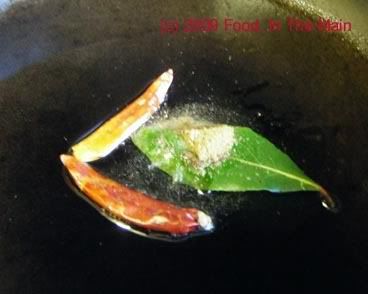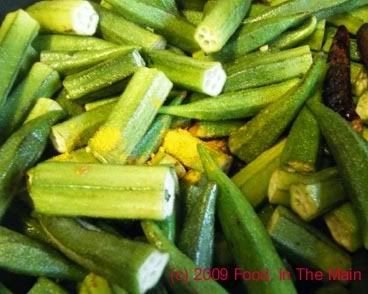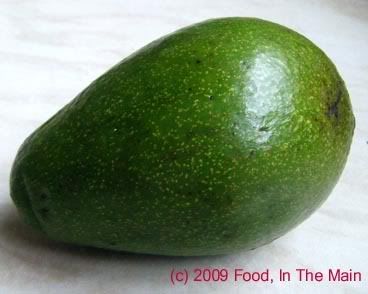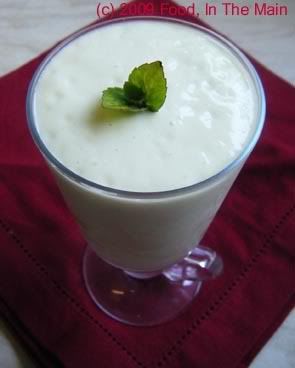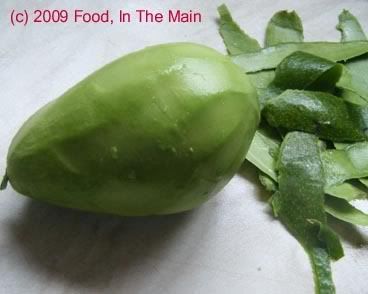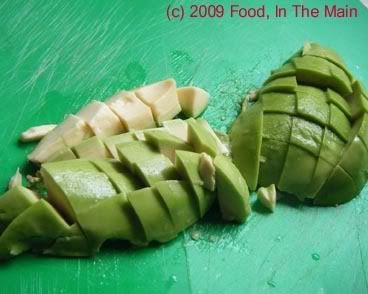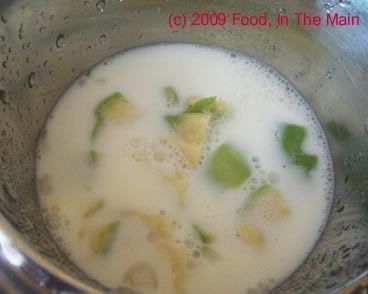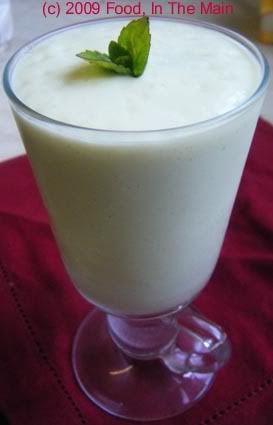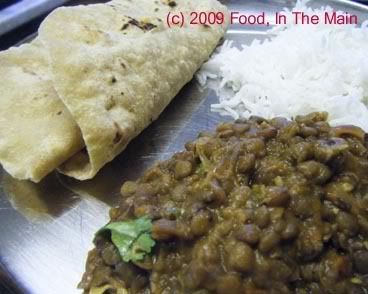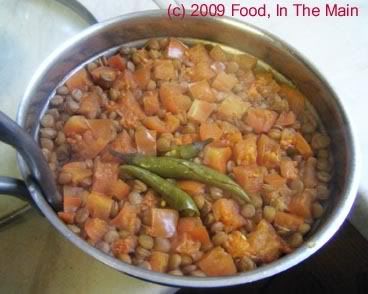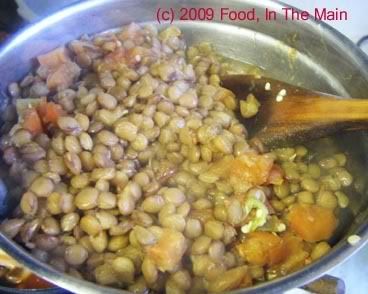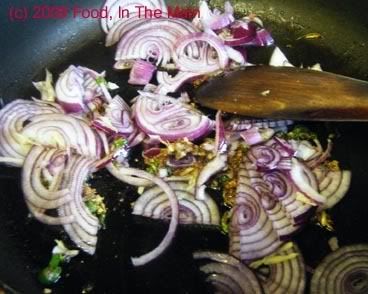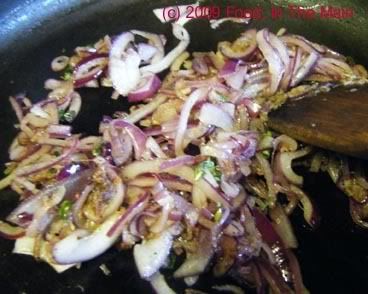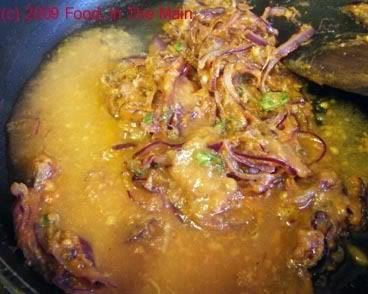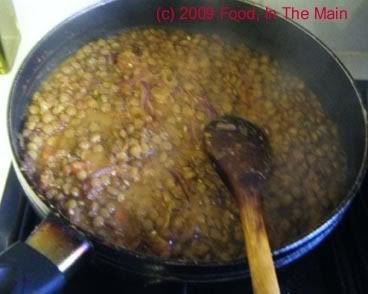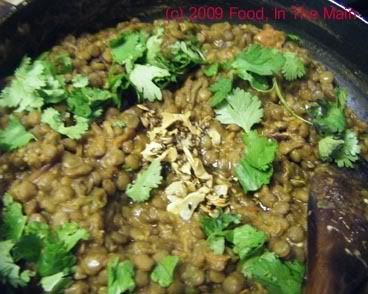However, there were a few Granny Smith apples that had been in the refrigerator for weeks. They needed using up, but they didn't quite look appetising enough to eat (plus there were fresh eating apples which I'd bought, having forgotten about the Grannies!) So I hauled out my file book of "cakes to try" and chanced upon the apple pound cake recipe again... and my mother's presence here encouraged me to omit the eggs, so that she could eat the cake too. I used oil instead of butter, and substituted the eggs with mashed banana, and because I had run out of regular flour, I used self-raising flour. Then of course I wasnt sure how much baking powder/soda I should add to the flour to make up for the lack of eggs... all in all, let's say that I wasnt very certain of the cake's outcome.
Surprisingly, and very pleasingly, it was super moist and wonderfully flavourful - the moistness from the grated apple and the flavour because I'd used cinnamon and cardamom rather than vanilla extract. The layer of apples at the bottom (which became the top when the cake was inverted - oh, did I forget to mention that I made it an upside-down apple cake?) had caramelised just the tiniest bit from the sprinking of demerara sugar I'd added to the cake pan at the first. About 98% of the apples unmoulded cleanly from the pan, but the bits that were left in the pan tasted unbelievably gorgeous - which I scarfed down as cook's perk, naturally...
All in all, the cake was great on its own with a cup of tea, and just as gorgeous warmed slightly and served with vanilla icecream. All in all, one of the nicest eggless cakes I've made despite my meddling with the instructions and ingredients!
Recipe for: Moist apple cake
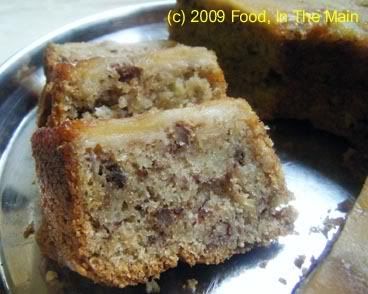
Ingredients:
3 Granny Smith apples
1-1/2 cups self-raising flour
1/2 tsp baking soda
1/4 tsp salt
1/2 tsp cinnamon powder
1/4 tsp cardamom powder
3/4 cup vegetable/sunflower oil
3/4 cup white sugar
3 tbsp demerara sugar
1 small ripe banana (to make 1/4 cup mashed)
1/4 cup chopped walnuts
2-3 tbsp milk
Method:
1. Grease an 8” tube pan. Sprinkle demerara sugar evenly over the bottom.
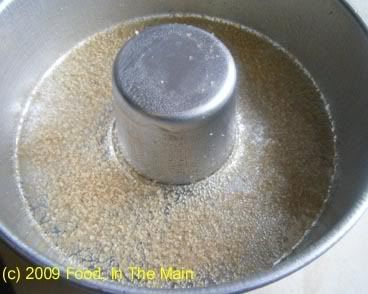
Preheat oven to 180C.
2. Peel and core apples.
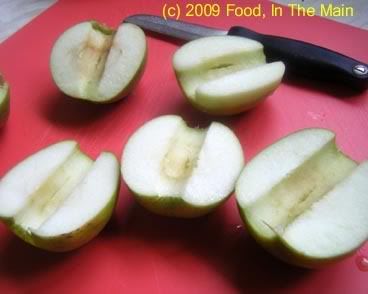
Slice one apple in half vertically, turn it a quarter circle and slice again into ¼ cm thick slices.
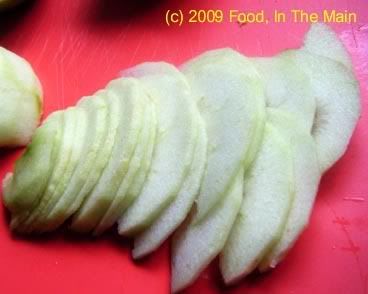
3. Grate the remaining apples and set aside, covered.

4. Combine flour, baking soda, cinnamon and cardamom powder and salt in a medium bowl.
5. In a large bowl, add the mashed banana, white sugar and vegetable oil.
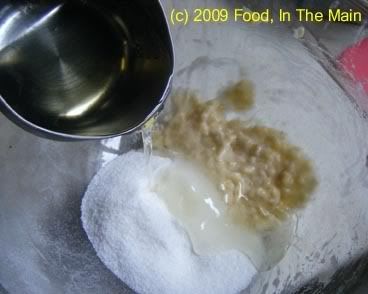
Beat till well blended.
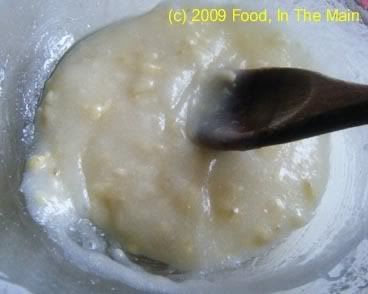
6. Add the flour in three or four stages, mixing well after each addition.

If the batter gets very thick, add a couple of tbsp milk to make it easier to mix. Don’t add too much milk, though - the grated apples will add enough moisture to the batter later.
7. Fold in the shredded apples
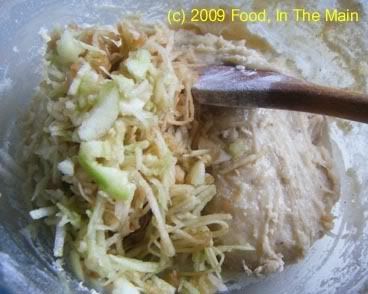
and chopped walnuts into the batter.
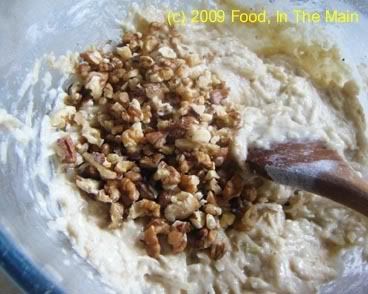
8. Arrange the sliced apples on the demerara sugar at the bottom of the pan, overlapping the slices slightly.
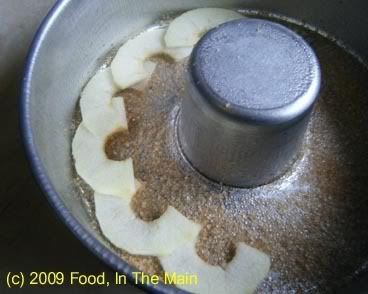

9. Spoon the batter evenly over the sliced apples and bake at 180C for 30 minutes.
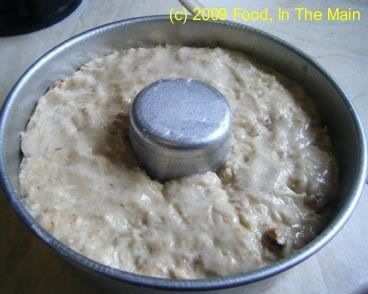
Check to see if the cake is done; if not, give it another five minutes (and a further 5 if required) and check again. The cake should have pulled away slightly at the edges.
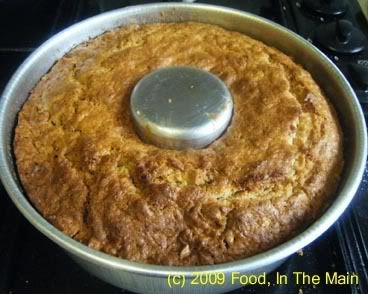
10. Cool the cake in the pan for 15 minutes, then carefully turn out onto a serving plate.
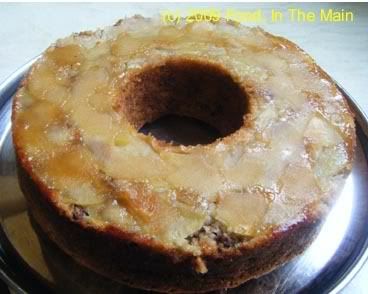
Let cool completely before slicing carefully.
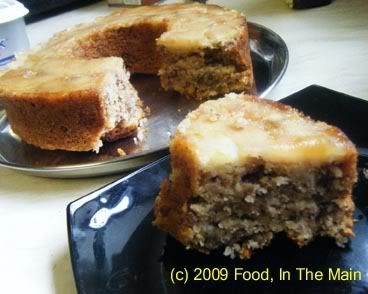
Serve with vanilla icecream or thick cream, if desired.
